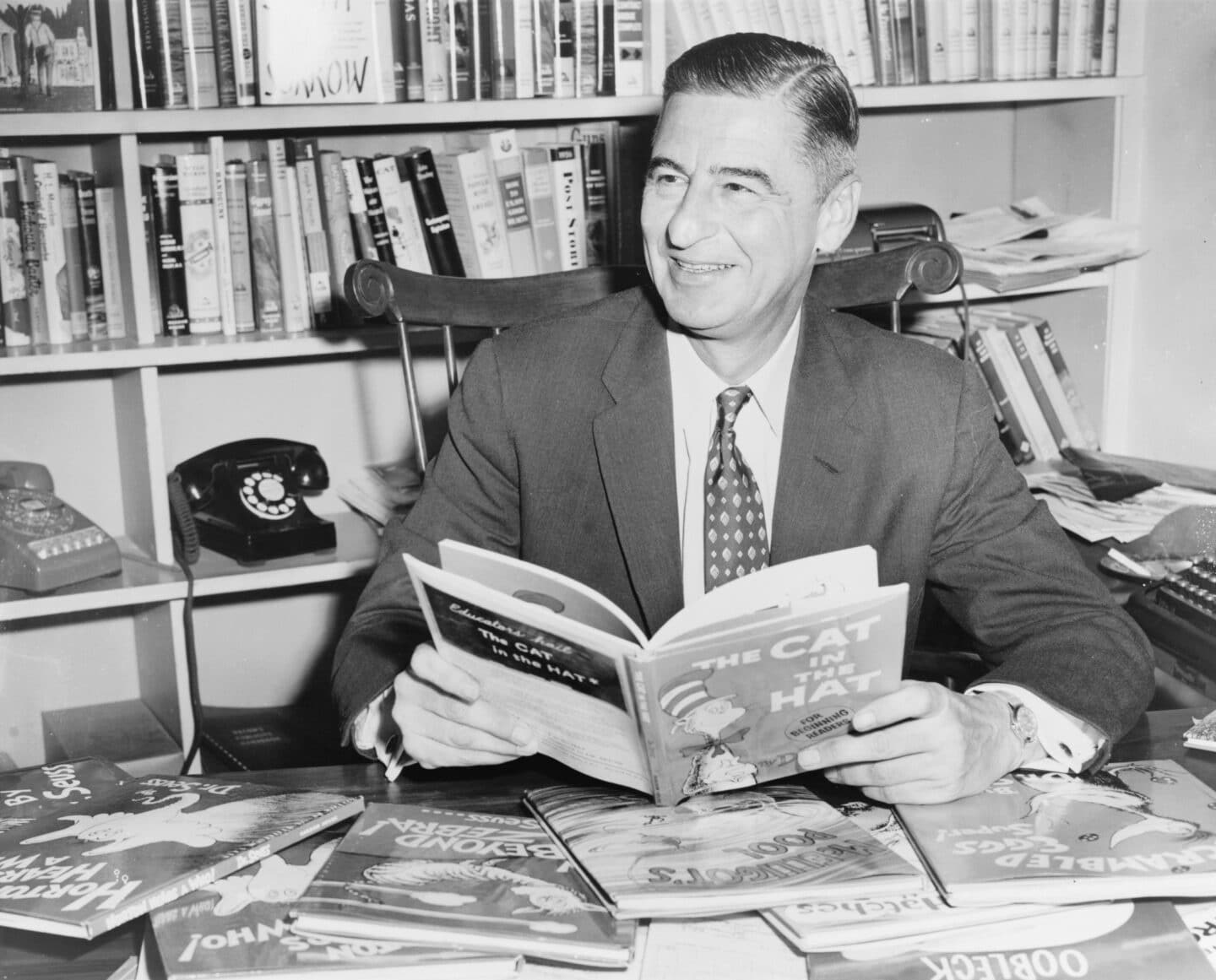
Theodor Seuss Geisel in 1957

Sketching the Grinch
Today marks 100 years since writer and illustrator Theodor Seuss Geisel, aka Dr Seuss, matriculated at Lincoln in 1925. Leaving after a year, he went on to write 60-65 books, although some were compiled posthumously under his name. Known especially for his children's books - including favourites such as The Cat in the Hat and Green Eggs and Ham - he reshaped children’s literature by proving that simplicity could be wildly imaginative. Beneath the rhymes and whimsy sat sharp social observations, clever wordplay and moral clarity wrapped in delightful nonsense.
He made reading fun, accessible and a bit subversive. His playful rhythm taught generations to read, while books like The Lorax and Horton Hears a Who! quietly taught them to think about empathy, environment and justice.
Shortly after his death in 1991, the life of Dr Seuss was reflected on by former Fellow and Rector Vivian H.H. Green:
“No Lincoln man has ever had a wider public as cartoonist, playwright and above all as children’s author. The author of 48 children’s books, his books were translated into 20 languages and had an estimated sale of more than 200 million copies. Though he had no children of his own, he had an instinctive understanding of a child’s mind. He was a master of fantastic inventiveness with a hard logical streak and an underlying seriousness of outlook. ‘I’d rather write for kids’, he once said, ‘they’re more appreciative. Adults are obsolete children, and the hell with them.’
The son of Theodor R. Geisel, the Superintendent of the Parks at Springfield, Massachusetts, he was born on 4 March 1904. After graduating from high school, he majored in English at Dartmouth University where he contributed cartoons to the campus magazine. After graduation he came to study English literature at Lincoln, but the College at this period was hardly a stronghold of English literature and after a year he decided to leave and spend some time in Paris. Nor subsequently does he seem to have had much, if any, contact with the College. But it was at Oxford that he met Helen Marion Palmer, a teacher, whom he married in 1927. It was Helen who suggested that he should abandon his proposed career as a teacher and make drawing his life’s work. His first book And to Think that I saw it on Mulberry Street appeared in 1937. The rest is in a sense literary history.
In 1984, he was awarded a special Pulitzer prize ‘for his contribution over nearly half a century to the education and enjoyment of America’s children and their parents.’ Dr Seuss’s death at the age of 87 deprived the world of a creative genius and Lincoln of one of the most distinguished of its old members.”